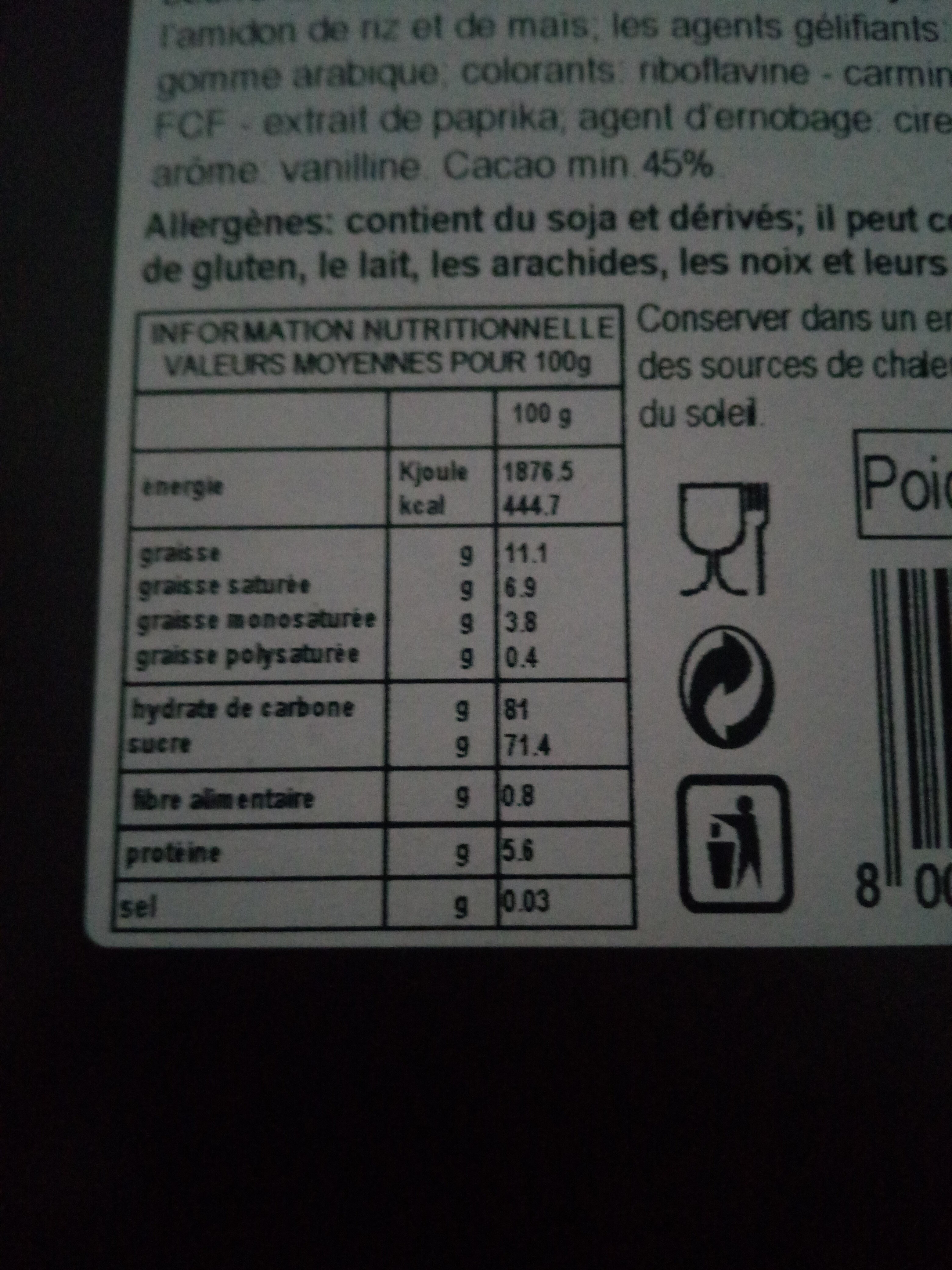Dragées au chocolat - Vert anis - dragee d'amour - 1kg
This product page is not complete. You can help to complete it by editing it and adding more data from the photos we have, or by taking more photos using the app for Android or iPhone/iPad. Thank you!
×
Barcode: 8005085716640 (EAN / EAN-13)
Quantity: 1kg
Packaging: Box
Brands: dragee d'amour, Crispo
Categories: Snacks, Sweet snacks, Confectioneries, fr:Bonbons dragéifiés
Manufacturing or processing places: Crispo S.r.l.
Countries where sold: France
Matching with your preferences
Environment
Packaging
Transportation
Report a problem
Data sources
Product added on by openfoodfacts-contributors
Last edit of product page on by telperion87.
Product page also edited by alengry, packbot, quechoisir, roboto-app.
If the data is incomplete or incorrect, you can complete or correct it by editing this page.











